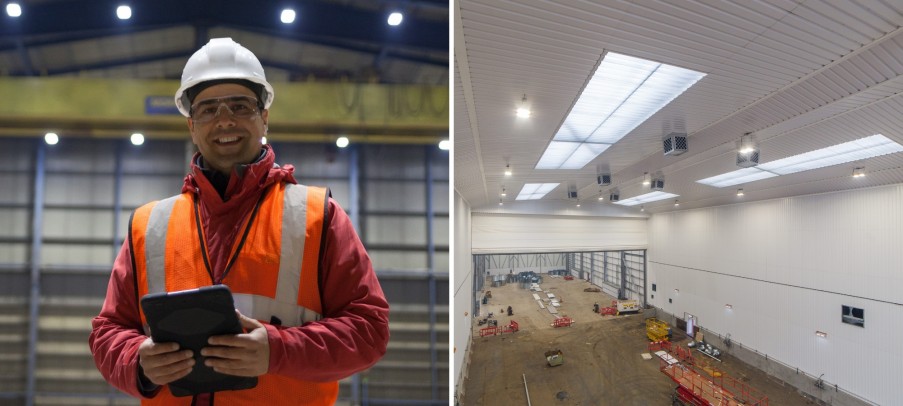
Process Industry Lighting Projects : A Guide

Welcome to the first in a series of blogs from Lead Lighting Consultant Arzhang where we answer your questions on LED lighting.
We are about to embark on our first lighting project what do we need to know so our project is successful?
A lighting retrofit, new build, or a facility expansion, is a unique opportunity to make a lasting impact. If you’re considering LED lighting, your decision will easily last for more than a decade, so it’s important that you take the time and effort to take a comprehensive approach to the project.
Before you start obtaining quotes for new lighting, there are important parameters of lighting that you should understand.
To assist you in comparing possible solutions for your lighting projects it is helpful to fully understand some of the terminology:
Lumen (lm) – is a measure of the visible light emitted by a source, and thus how bright a particular lamp or light source will appear. In simple terms, one lumen is equivalent to the light produced from a single common candle.
Watt (W) – is a measure of the power the light source will consume to produce the lumens stated. The wattage can give you a direct indication of the expected energy consumption of an electric lamp. Additional energy will be consumed by power conditioning equipment situated between the mains supply and lamps. Typically, this adds up to 10 percent to the wattage quoted on lamps. Suppliers often refer to this as ‘ballast’ or ‘induction’ power and will refer to ‘circuit’ or ‘system’ watts to mean the total power demand of the lighting unit.
Luminous efficacy – is a measure of the efficiency of a light source and is expressed in lumens per watt (lm/W). Different types of lighting, such as compact fluorescent and light emitting diodes (LED) have quite different efficacies.
Lux – is a measure of illuminance and is equivalent to lumens per square metre (lm/m2). It expresses the light falling on a surface and is a common design criterion. The Chartered Institution of Building Services Engineers (CIBSE) produces a Code for Interior Lighting which gives lighting requirements for areas (for example, 100 lux for corridors and 500 lux for a hotel kitchen). Illuminance greatly depends on the type of light fitting and the way it spreads the light on a surface. Watts per m2 per 100 lux is a good measure to compare different proposals as it takes into consideration all of the factors above.
Colour temperature – is the colour of the light emitted by a lamp is either described (usually in terms of being cool or warm) or given with a measure in temperature in kelvin (K) – typically ranging from 1,000K to 6,600K. The higher the temperature the colder the colour. For example, noon sunlight is a cool, blue light with a colour temperature of 5,600K and a traditional tungsten light bulb is a warmer light with a colour temperature of 2,800K.
Colour rendering index (CRI) – is a measure of how accurately a light source renders all frequencies of light, compared to a perfect white light source. It’s rated on a range from 1 to 100. CRI is very important for sectors such as printing and textiles where a CRI of 90 or above is recommended.
Human perception of light and surrounding decor are important factors. For example, 100 lux in a corridor with white walls and floor will be perceived as better lit than the same corridor with dark colours.
By familiarising yourself with these terms you will stand a better chance in comparing products suggested by lighting suppliers.
And if you’d like to discuss your current requirements and arrange a quotation for your project why not contact Rita Callender, Glowled’s Lighting Solutions Manager? Her details are rcallender@glowled.com
Find out more about Glowed, here.
By Glowled Ltd
716 Views



